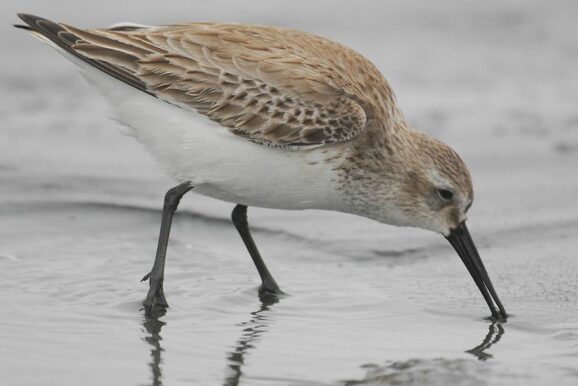The name ‘Shorebirds’ is used to describe plovers and sandpipers. Both are highly migratory birds that generally use marshes, estuaries, and sea shores as feeding habitat. Shorebirds are a challenging group of birds to identify because there are over fifty species in North America, often with subtle plumage or bill shape differences, and they occur in large flocks that can be too far away to pinpoint distinguishing features. Despite their sometimes frustrating inscrutability, seeing a flock of thousands of birds flying as one, millimetres separating wingtip from wingtip, is awe-inspiring. It is even more impressive when you realise that many species migrate hundreds of kilometres, breeding in the far north of Canada and Alaska. Most mortality takes place during migration; shorebirds use up their fat reserves during their long flights, and they can fly for over forty hours without stopping to rest.
The Fraser River Delta is a stop-over place for many species of shorebirds. During the winter, thousands of shorebirds may come into farm fields at night to probe the soil in search of invertebrate prey. Fields with little vegetative cover are used frequently, but shorebirds will feed on fields enrolled in the Winter Cover Crop Stewardship Program as well. Spring cereal cover crops that cannot survive frost can provide a dense mat of dead vegetation on the surface of farm fields that invertebrates hide under. This, in turn, provides rich feeding grounds for shorebirds. Some of these birds use the delta as more than a brief pit-stop, spending months in the area. These include Black-bellied Plover, Dunlin, and Western Sandpiper.
Shorebirds that use farmland in Delta are (click on the link to view the species profile):

